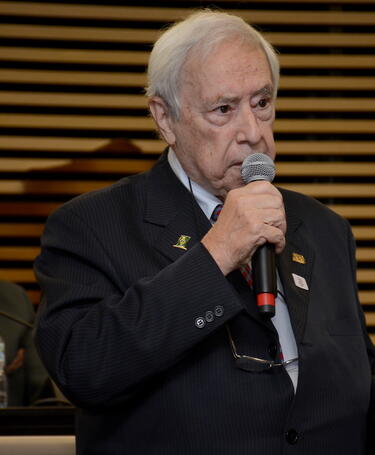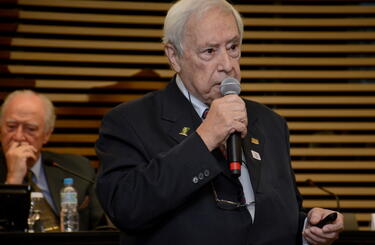
Maintaining safety at sea

Basilio Dagnino, CQP FCQI, former President of the Brazilian Academy for Quality, explains how the latest technologies are helping to improve designs for modern-day vessels. But there is much more work to be done, he says.
A recent oil spill off the coast of Brazil is an example of where quality processes can go wrong at sea. Since the incident, in September 2019, over 180 Brazilian beaches have been tarred in oil. This has had catastrophic effects on sealife, killing many clams, shellfishes and turtles. Although the Brazilian authorities, regulators and environmental agencies have come together to resolve this issue, the investigation – several months on – is still ongoing.
Typically, oil spills are caused by:
- People not paying attention to proper processes and making mistakes
- Illegal dumpers
- Natural disasters
- Broken or faulty equipment
- Accidents involving oil tankers, pipelines or refineries.
From a quality perspective, the use of IT systems in oil tankers and other vessels is helping to support quality improvements from cradle to cradle. However, modern ships are getting larger and more complex, meaning additional coverage and functionality is required for their design to improve health, safety and the environment.
Sealing the problem
Leakages are still a common issue in oil tankers, but these can be prevented by incorporating double hulls. The quality of the steel used to construct double hulls must comply with tough specifications. Welding is also a critical process, since ships are constructed in sections that need to be progressively joined.
3D printing technology and shipbuilding robotics – used to replace the traditional welding of sections – are among advances helping to reduce costs and improve quality for modern-day vessels.
Fully automated propulsion systems are also being introduced, and extreme care must be taken when coupling them with remote operation systems.
Saving the environment
From an environmental perspective, the latest liquefied natural gas (LNG) engines are helping to reduce CO2 emissions by 20 to 25 per cent compared to diesel engines, while NOX emissions are cut by almost 92 per cent. Moreover, the latest generation ship engines will have to comply with new regulations, set out by the International Maritime Organization (IMO). The regulations stipulate that from January 2020, all ships using fuels with a sulphur content above 0.5 per cent will be banned, compared to the 3.5 per cent now. Anyone found breaching the rules will receive a large fine or even have their vessel detained as a result.
Other new ideas provide food for thought, such as the development of a ballast-free bulk carrier. Ballast water, along with native bacteria and small invertebrates, is taken on to add weight to improve the stability and manoevrability of vessels – but this can be viewed as an ecological hazard when the water is discharged in another part of the world.
The ballast-free design has a network of longitudinal pipes from bow to stern in the ship’s hull, allowing a constant flow of local sea water, so avoiding the need to transfer of contaminated water or water from one ecosystem to another.
Although there has been much progression on the construction of vessels from design to dismantling, accidents and disasters continue to happen. This means that there is still a lot of work to be done to address and identify these problems, to help prevent incidents such as Brazil’s latest oil spill from happening again.
What needs to be done?
If the Brazilian Navy had already implemented SisGAAz, a complex surveillance and management system, designed to monitor Brazil’s national waters and coastiline – the identification of the causes of the oil spill could have been much easier.
In addition to all those already involved in the construction and maintenance of vessels, the call-to-action is broad, and includes:
- The IMO, to set rules regulating sea traffic
- National organisations, public and private, managing and controlling the operation of vessels, harbours, channels, lakes, rivers, maritime telecommunication (such as Inmarsat) and navigation aids systems, surveying and printing of nautical charts, etc
- Search and rescue infrastructure at national and international level
- Certification organisations and classification societies, as well as accreditation bodies – the independent inspection and qualification services they provide are very relevant to assure quality in shipbuilding
- International bodies, such as ISO, and national organisations, to produce technical standards in a broad array of subjects, both technical and managerial
- Supply chain qualification, especially important for steel mills and safety-related systems and equipments producers
- People involved in the training and formal qualification of crew personnel. Before unmanned ships are commonplace, people will be the key to sustainability and safety at sea for many years to come
- Those responsible for legislation on safety at sea, transportation of dangerous products, smuggling, etc, and relevant compliance: police authorities and judicial power, especially maritime courts, to decide on penalties applicable to companies and people responsible for accidents and disasters.
Quality perspectives
Quality professionals intending to work in the area of shipbuilding and related sectors must be prepared to have an overall vision of maritime activities. Ships are becoming everyday bigger and more complex, thus the need of the use of comprehensive management systems, including risk management. The exponential growth of new technologies will certainly require a continual updating of knowledge through formal or informal acquisition of competence and professional skills.